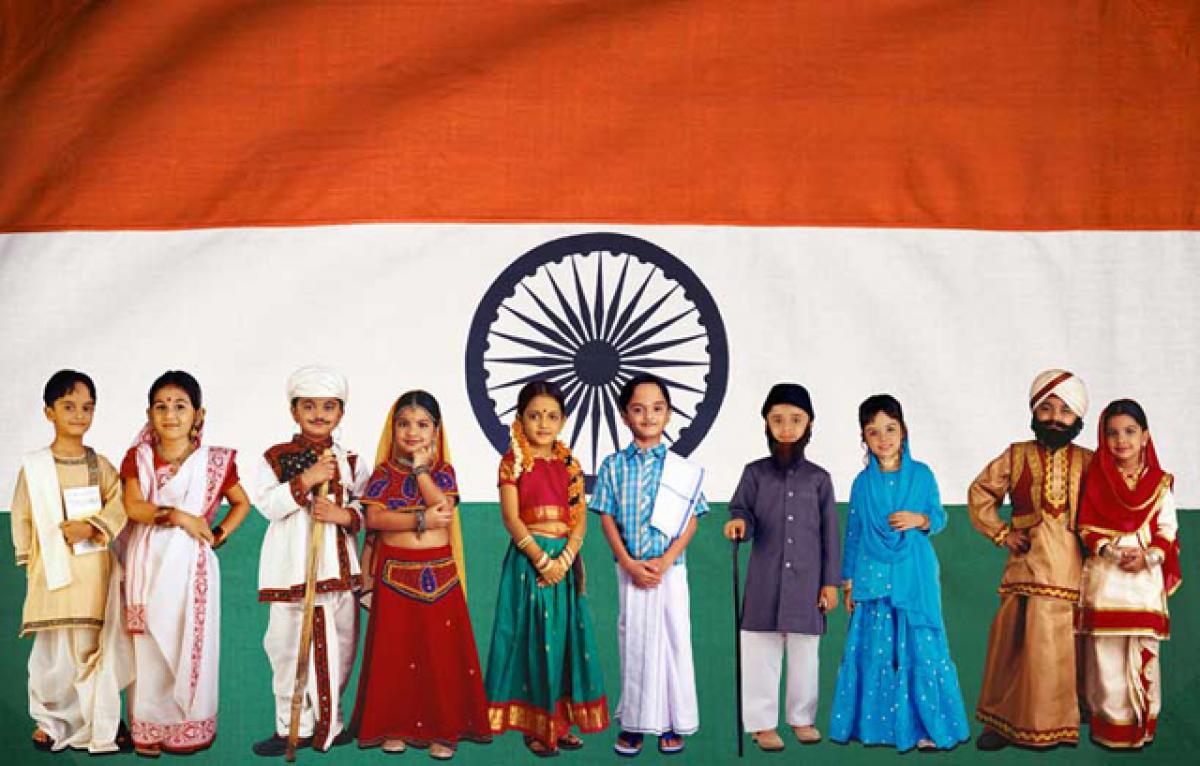Live
- 'Refrain from interfering in municipal polls': Union Minister Ravneet Bittu tells Punjab officials
- SC grants anticipatory bail to accused in POCSO case
- Rising Rajasthan Summit to return in 2026, says CM Sharma
- Kerala HC issues contempt notice to official over elephant regulation violations
- 3rd ODI: Have to learn to take things till the end, says Harmanpreet after India's 3-0 defeat to Australia
- Brook is probably the best Test batter in the world right now, says Ponting
- Congress to fight alone in Delhi, Alok Sharma labels AAP a 'distraction'
- EPFO Subscribers Alert: Withdraw Provident Fund Money Directly From ATMs Soon
- Shehla Rashid calls PM Modi a 'fair administrator,' shares her journey from critic to admirer
- Direct Flights Between Mangaluru and Singapore to Begin in New Year
Just In

Religious census likely to stir up communal politics. Will the religious census released by the Central government on August 25 stir up India\'s political cauldron? Reports from two states with a sizeable Muslim population suggest that it just could.
Lucknow/Patna: Will the religious census released by the Central government on August 25 stir up India's political cauldron? Reports from two states with a sizeable Muslim population suggest that it just could.
.jpg)
In Uttar Pradesh, the answer seemingly is in the affirmative, fear many, as the already polarised polity of India's most politically crucial state is set to be harvested for electoral gains in the run-up to the state assembly elections due in early 2017.
While most political leaders in Uttar Pradesh – including the ones known for competing with their professional adversaries for quotes and sound bytes – have refused to come on record candidly, there is an overwhelming sense in the state that the "religious census will precipitate into a politics based on religious lines.”
The Muslim population in Uttar Pradesh has grown to 19.8 per cent in the last 14 years – an increase of 0.86 per cent. "The census on religious lines had been held back for long and we all know its release has a political statement to it," a Congress leader, not wishing to be named, told IANS.
He further pointed out that the fact that the Hindu population had slipped below 80 per cent for the first time – juxtaposed with the marginal growth of Muslims – was "sure to be used by those who play politics of religion".
State spokesman of the Bharatiya Janata Party (BJP) Vijay Bahadur Pathak, though not ready for a usual full-length statement, told IANS that the census had thrown up two things which needed to be immediately tackled and with all seriousness – jansankhya niyantran (population control) and jansankhya santulan (population balance). "Any and everybody who wishes for development will think in similar fashion," he elaborated.
Eminent Sunni cleric Maulana Irfan Mian Farangi Mahali saw the release of the religious census as a "political stunt which will only end up widening the growing gap between two communities. The real issues are much different like price rise and corruption but such data is sure to stoke the imagination of political parties," he averred.
Of a population of 19.98 crore in 2011, Uttar Pradesh now has 15.93 crore Hindus, 3.84 crore Muslims, 64.35 lakh Sikhs and 35.6 lakh Christians. The districts with highest concentration of Muslims are Moradabad, Muzaffarnagar, Bijnore, Bareilly and Saharanpur. In the sensitive area of western UP, which has been a communal flash point over the past few years, in 17 districts the ratio of Hindus and Muslims is very wide and only Amroha and Rampur have more Muslims.
Senior journalist Rajiv Ranjan Jha said Uttar Pradesh was a sensitive state and one where politics revolved around caste and community. "There can be no doubt that the release of the census would trigger a political chain-reaction and harvest divisive results," Jha said.
A report from Patna said that taking Bihar's sizeable Muslim population into consideration, not only are the RJD, the JD-U and Congress eyeing their support, but even the BJP is also trying to gain their support ahead of the assembly polls expected in October.
"No political party can ignore this sizeable population in view of the coming polls," social activist Nayiar Fatmi told IANS. Soroor Ahmad, a socio-political analyst, said the Muslim population is the highest in Bihar's most backward pockets with high degree of poverty, illiteracy and migration.
Muslims in districts like Kishanganj, Purnea, Araria, Katihar and Supaul – known as the Seemanchal region as they share border with Nepal and Bangladesh – have been playing an important role in the polls.
Ahmad said that AIMIM president Asadullah Owaisi recently visited and addressed a public meeting in Kishanganj to explore possibilities of contesting the Bihar polls. According to the 2011 census, Bihar's population stood at 10.5 crore, of which 16.5 percent were Muslims.

© 2024 Hyderabad Media House Limited/The Hans India. All rights reserved. Powered by hocalwire.com







